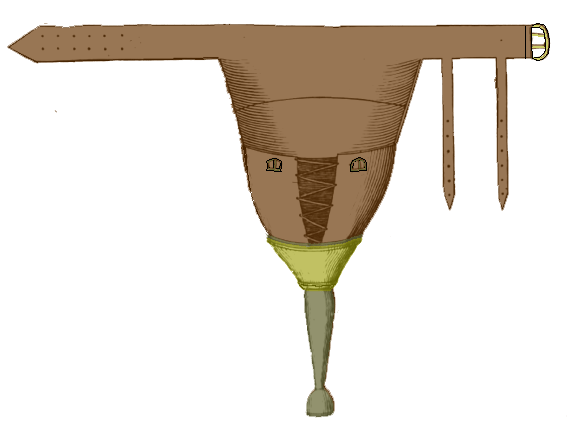Quite a few things could lead to a pirate losing a foot or a leg while aboard ship. Even a badly broken leg or crushed foot could lead to amputation. There is no doubt that men missing a leg also served aboard merchant ships. So did pirates have peg legs? The answer would be if they needed one and if they could afford it.
It wasn't until the 1700s that artificial limbs carved from light weight wood became the common prosthetic. These also were ill-fitting, sometimes painful to wear. Widespread use of artificial limbs did not really come about until the American Civil War.
Most artificial legs were connected by a leather cup that fitted over a portion of the stump. These would often be lined with sheepskin, or other material to make the cup more comfortable. Because the methods used to amputate a leg were not as advanced as they are today, the stumps were often tender or even painful. An improperly fitting peg leg would only increase the pain. Sometimes no mater how well the leg fit, it would cause great pain.
Some of the material used to make the leg included bone, dense woods such an oak, light woods such as pine or even cork. Metal was also still in use during the Golden Age. Each material had its advantages and disadvantages. Heavy dense woods and metal were heavy and would tire a man out when he wore it. Lighter woods and bone were prone to crack and break more quickly.
Attaching the peg leg usually involved strapping the leg at least to thigh and sometimes around the waist and even around the shoulder in order to prevent the leg from slipping around. It was common for people wearing peg legs to still need the use of a crutches even when using the peg leg.
So did pirates use peg legs?
Yes! There are at least two recorded accounts of pirates wearing peg legs. But most amputees who remained part of pirate crew probably hobbled along using crutches.

18th century peg leg

The only author and editor of all pages on the site. Most of what I write about is based on years of book reading on the topic. My first web page was published back in 1994.